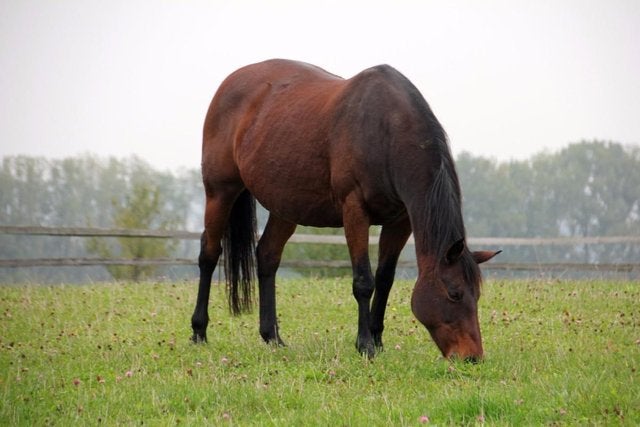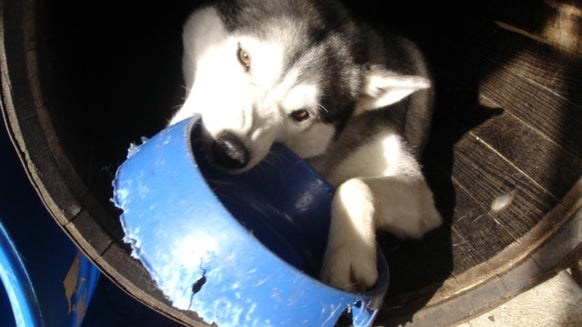Poisonous Plants for Horses

It’s really important to be able to recognise plants and trees that are poisonous to horses and be aware of the places they may grow, as well as know their names.
Common poisonous plants for horses
Ragwort has a bitter taste and is rarely eaten by horses when it is growing, however when wilted or dried it becomes more palatable. This plant contains toxins that result in liver failure and even death, so hay should not be made from fields containing ragwort. Eating just 1-5kg of the stuff over a horse’s life time may be fatal. It thrives on poor grazing and wasteland, and each plant produces thousands of seeds that are dispersed widely by the wind. Local authorities have legal power to order land owners to clear land containing the weed, and a good guide to identifying it is available on the Defra website. Foxglove: Horses will not normally eat fresh foxglove but it is more palatable in hay and just 100g could prove fatal. Symptoms of foxglove poisoning include contracted pupils, convulsions, and breathing difficulties. Sadly, horses can die only a few hours after eating it. Deadly Nightshade: Poisoning from nightshade is not normally fatal but can cause loss of consciousness, dilation of the pupils and convulsions. Buttercups: These are poisonous if eaten fresh, but your horse would have to eat a large amount. Dried buttercups are harmless in hay. Oak (acorns): Oak trees pose a particular threat when they drop their acorns in the autumn. Acorns are relished by many horses but eating large quantities can lead to severe colic and poisoning. Collect the acorns up, or move horses to a place without oak in the autumn. Yew: Is common in gardens, and the fallen leaves and berries are as lethal as the fresh plant – so be careful of fallen leaves and berries being blown into your field, even if the hedges are fenced off. Just 0.5kg can be fatal. Privet: Privet (pictured below) is also common in gardens so be careful of neighbours hedges and the possibility of people dumping cuttings in the field. Box privet is the most dangerous with small quantities causing death. Rhododendron: Very small quantities of this are highly toxic, causing death by failure of the respiratory system. Acer (sycamore/maple): This is known as a seasonal threat as it is thought that the helicopter seeds in autumn, and the saplings in spring, contain Hypoglycin-A that causes atypical myopathy in horses. Symptoms include muscular stiffness, reluctance to walk, muscle tremors, sweating, depression, high heart rate, dark urine (reddish in colour), the horse may appear weak and may have difficulty standing, breathing difficulties, however the horse may still want to eat.
How to prevent plants poisoning your horse
- Uproot poisonous plants before they go to seed. Remove them from the field and burn them. Some hazardous plants, like buttercups, may only be eradicated by spraying with a suitable weed killer.
- Spot spray small areas and individual plants. The best time to do this is when the plants are still young. If plants cover a large area, contact a professional for help. Always seek professional advice when using herbicides and remember horses should not be allowed back onto the pasture until there has been enough heavy rainfall to wash the chemicals from the leaves.
- Keep poisonous tress and hedges fenced off and cut well back to prevent horses reaching them over the fence.
- Ornamental plants, trees and shrubs are likely to be poisonous, so fence them off if in doubt
- Seedlings and seeds in autumn may also need collecting or fencing off to prevent ingestion
- If your paddock backs onto gardens, it’s a good idea to check that none of these are growing over into grazing areas. Make sure that kind-hearted gardeners aren’t giving prunings to your horses to eat!
- Many plant poisons are cumulative, so if your horse eats them with no ill side effects it shouldn’t mean you should continue to let it eat them.
- Very importantly, if you suspect your horse has eaten a poisonous plant, call your vet immediately.
- The poisonous plants most commonly found are: ragwort, foxglove, nightshade (deadly and woody), hemlock, sycamore and buttercups. Poisonous trees also include yew, oak and laburnum, and hedges, privet, laurel and rhododendron.
Help us help horses
Blue Cross runs the National Equine Health Survey, an annual survey that looks at the general health of Britain’s horses, ponies, donkeys and mules. We collect data on the number of horses with veterinary-confirmed poisonings so we can help prevent them in the future.
If you’d like to register to take part in next year’s survey, please visitwww.bluecross.org.uk/nehs
Gemma Taylor is an Education Officer at Blue Cross. She has worked at Blue Cross for 11 years and now runs the National Equine Health Survey, collecting data with a view to improving the future health of the nation’s horses.








